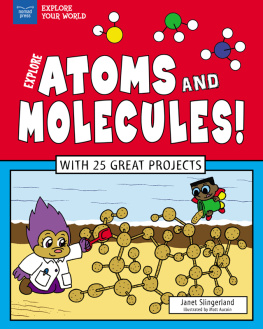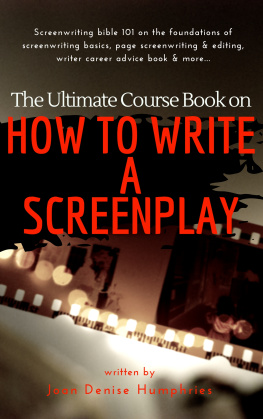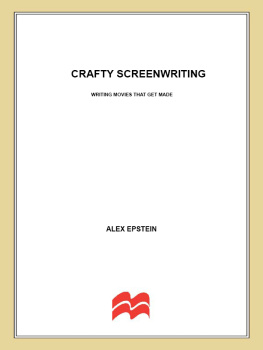Where to begin? The path from unseasoned amateur to skilled professional is a long journey, and as with any journey, those most likely to succeed are those with the best understanding of the endeavor they are about to take. To begin simply, movies are a form of storytelling. So are novels, plays, childrens books, and the tales told around the campfire. All forms of storytelling share the same basic rules. In addition, each form follows unique rules, specialized to its mode of telling. The storytelling found in cinema is not the same as that found in a book. Nor is it the same as a play. A screenplay is written to be dramatized by actors, photographed with cameras, pieced together through editing, and then presented to an audience as a finished whole. This mode of execution forces cinema to tell its stories with strict rules different from those found in any other form. This gives cinematic storytelling certain strengths and weaknesses; its own set of needs, as well as a wide array of limitations.
Because of this, s creencraft can start to feel very complicated, very quick. The cinematic storyteller must learn to keep hundreds of elements in balance, while at the same time give the audience an experience it finds original and entertaining. This seems like a tall order. So where to begin? At the beginning, of course. We learn to read by first learning the alphabet. We begin mathematics by first learning to count. So, we begin our exploration of the cinematic story by asking:
WHAT IS A STORY?
The question is misleadingly simple. Everyone knows what a story is, but defining the term proves surprisingly difficult. What exactly makes a story a story? What specific traits does a story possess to separate it from things which are clearly not?
At first glance, one might define a story as a series of events involving one or more persons. However, a mere series of events does not constitute a story. This, for instance, is not a story:
I woke up this morning. I showered. I sat in traffic on the way to work. I talked to my boss during lunch. I drove home and made dinner.
Just because events occur in chronological order, it does not necessarily mean those events create a story. Such a narrative will fail to hold an audiences attention for more than the shortest period of time. So, what is the difference between a story and a mere series of events? It all comes down to four basic qualifications. First,
- A story is about a PROBLEM and the resolution of that problem.
Take a look at the basic ideas behind four well-known stories:
- A jaded expatriate re-encounters the woman who broke his heart ( Casablanca ).
- A mafia family is threatened by its violent rivals ( The Godfather ).
- The children of warring families fall in love (Romeo & Juliet).
- Pigs in poorly-constructed homes are threatened by a Big Bad Wolf (The Three Little Pigs).
What do these ideas have in common? They all involve characters dealing with a PROBLEM.
Stories are all about problems, whether that problem be physical or emotional, intimate or cosmic, concrete or abstract. The return of the old lover, the rivals aggression, the forbidden romance, the Big Bad Wolf; the sudden arrival of these problems trigger characters to take action. Without a problem, a story would never begin. The remainder of the story unfolds as characters take action s to deal with that problem. In Casablanca, Rick spends the story debating whether or not to help his ex-lover. In The Godfather, Michael Corleone takes actions to protect his family. Romeo and Juliet go to great lengths to continue their romance. The Three Little Pigs run for better shelter.
Why are problems so central to storytelling? As learned in the previous chapter (Chapter 2: Its All About the Audience, contained in the full-length version of Atoms ), stories exist as social therapy. They provide the appearance of order and meaning in a chaotic world. By presenting a problem and then the quest for its solution, a story becomes a transformation from chaos to order from an unstable situation into one where everything has been resolved. This in turn gives the audience comfort and reassurance. When the audience sees characters face and defeat a problem, they feel much more confidence in their ability to deal with problems in their own lives. Stories tell us that no matter how bad things may be, no problem is insurmountable. In this way, a problem and its solution give a story its meaning.
- Stories are about HUMAN BEINGS.
A story cannot exist without characters . To put it a better way, stories are about people. People doing things; speaking, acting, loving, fighting, wanting, needing. A documentary on soil erosion may present a fascinating problem, but it does not contain a story unless it focuses upon a human being dealing with that problem. Stories are reflections on our humanity. They help us better understand ourselves and others by presenting us with people to whom we can relate.
Though some stories contain characters that are not physically human, these characters are human nonetheless. Though the lead may be a bunny rabbit, a robot, or an animate teddy bear, the characters have been anthropomorphized that is, given human traits and behavior. They are simply people in a different form, exhibiting the same emotions, urges, and anxieties as their fully human counterparts. Even live-action franchises starring real animals anthropomorphize their heroes by giving the animals an intelligence and range of emotion far beyond their natural capability. Because of this, audiences are able to connect with non-human characters as well as they can any human being.












